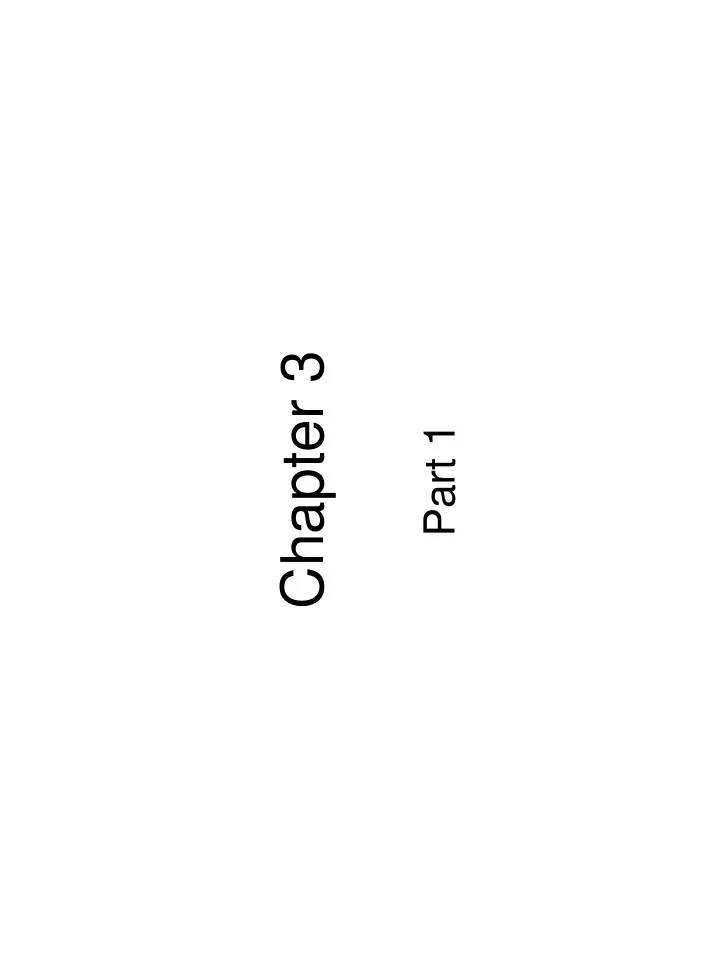

Chapter 3 Part 1
Orientation • Directions in the nervous system are described relatively to the neuraxis – An imaginary line drawn through the center of the length of the central nervous system, from the bottom of the spinal cord to the front of the forebrain. • Anterior– front end/ Posterior—tail • Rostral—toward the beak/ Caudal—toward the tail • Dorsal—back/ Ventral—belly • Superior—above/ Inferior—below • Ipsilateral—same side/ Contralateral—opposite sides • Frontal section • Horizontal section • Sagittal section
• Central nervous system (CNS): brain and spinal cord – Collections of cell body and dendrites (grey matter) are called nuclei/nucleus • Nucleus can also mean the center of a cell – Axons bundles (white matter) are called tracts • Peripheral nervous system (PNS): cranial nerves, spinal nerves, and peripheral ganglia – Collections of cell body and dendrites (grey matter) are called ganglia/ganglion, – Axons bundles (white matter) are called nerves
Meninges: Dura mater Arachnoid Pia mater Cerebrospinal fluid (CSF): Shock absorber Mediate in the exchanges of materials Meningiomas: Tumors of the nerve tissue covering the brain and spinal cord. Meningitis: inflammation of the meninges, caused by bacterial or viral infections elsewhere in the body that have spread into the blood and into the cerebrospinal fluid.
Ventricle : One of the hollow spaces within the brain, filled with cerebrospinal fluid
Choroid plexus The highly vascular tissue that protrudes into the ventricles and produces cerebrospinal fluid. Present in all components of the ventricular system except for the cerebral aqueduct and the occipital and frontal horns of the lateral ventricles.
Flow of CSF Lateral ventricle—third ventricle—fourth ventricle— subarachnoid space—arachnoid granulation—superior sagittal sinus (blood vessels)
• Obstructive Hydrocephalus • A condition in which all or some of the brain’s ventricles are enlarged; caused by an obstruction that impedes the normal flow of CSF • 1 in 500 • Treatment: Shunt
Brain Development
Brain Regions
Major ventricle subdivision Principal structure Function division Forebrain Lateral Telecephalon Cerebral cortex Sensory, motor, cognition Basal ganglia Motor Limbic system Emotion, learning Third Diencephalon Thalamus Relays incoming information (except smell) to the appropriate part of the brain. Hypothalamus Hormonal levels, Vital functions, eg. hunger, thirst, temperature Midbrain Cerebral aqueduct Mesencephalon Tectum Tegmentum Relay Visual, auditory info from spinal cord to the forebrain; sleep Hindbrain Fourth Metencephalon Cerebellum Motor coordination, muscle tone Pons Motor control and sensory analysis, facial expression
• Ventricular zone – A layer of cells that line the inside of the neural rube; contains founder cells that divide and give rise to cells of the central nervous system • Radial glia – Special glia with fibers that grow radially outward from the ventricular zone to the surface of the cortex; provide guidance for neurons migrating outward during brain development. • Founder cells – Cells of the ventricular zone that divide and give rise to cells of the central nervous system • Symmetrical division – Division of a founder cell that gives rise to two identical founder cells, increases the size of the ventricular zone and hence the brain that develops from it • Asymmetrical division – Division of a founder cell that gives rise to another founder cell and a neuron, which migrates away from the ventricular zone toward its final resting place in the brain • Apoptosis – Death of a cell caused by a chemical signal that activates a genetic mechanism inside the cell
Early brain development • Macroscopic view: – Neural plate – neural tube – three chambers/ventricles – major parts • Microscopic view: – Neuronal growth occurs from the ventricles toward to the cortex – The role of founder cells and radial glia – Migration of cells. – Differentiation and formation of nucleus – Pruning of many synapses and cell death (apoptosis) occur
Role of gene and environmental factors in neural development • 1. The matural neural network depend on use—development of wiring in LGN and V1 • 2. There is some fluidity in neural development, especially during early development • Example: Visual cortex is relocated following early ablation
• 3. Critical periods during development are also important a. Imprinting is learning occurring at criticle period of time. Example: Studies on geese by Lorenz.
Protection of the CNS • CNS is well-protected from internal/external change • 1. Blood brain barrier (BBB)--protection from toxins, etc. • 2. Skull and vertebrae-- protection from physical insults • 3. Meninges--nourishment from blood and protection • 4. Cerebrospinal Fluid (CSF)
Major ventricle subdivisio Principal Function divisio n structure n Forebrai Lateral Telecephalo Cerebral Sensory, motor, n n cortex cognition Basal ganglia Motor Limbic system Emotion, learning Third Diencephal Thalamus Relays incoming on information (except smell) to the appropriate part of the brain. Hypothalamus Hormonal levels, Vital functions, eg. hunger, thirst, temperature Midbrai Cerebral Mesenceph Tectum Relay Visual, n aqueduct alon Tegmentum auditory info from spinal cord to the forebrain; sleep Hindbrai Fourth Metenceph Cerebellum Motor coordination, n alon muscle tone Pons Motor control and sensory analysis, facial expression Myelenceph Medulla Vital function, eg. alon oblongata Heart rate, breathing, blood pressure
Left and right hemispheres • Linear vs. Holistic • Sequential vs. random • Symbolic vs. concrete • Logical vs. intuitive • Verbal vs. nonverbal • Reality-based vs. fantasy-oriented
The cerebral cortex Cortical columns: functional regions, oriented perpendicular to the cortical surface, containing about 100,000 neurons, units of perception and cognition.
Homunculi Parts of the body that have acute sensation or fine motor control, such as the face and hands, occupy a disproportionately large area of the cortex.
Basal ganglia • Basal ganglia (=basal nuclei) and how they function • 1) Caudate, putamen, and globus pallidus • 2) Pathways for the motor loop • 3) Dysfunction: Dopamine and Parkinson's Disease
Limbic system
Recommend
More recommend